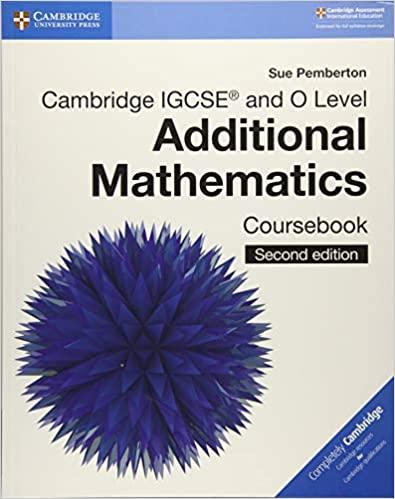Question
Unit 2 Problem Set A2 . Solve problems involving the application of permutations and combinations to determine the probability of an event. Build as few
Unit 2 Problem Set
A2. Solve problems involving the application of permutations and combinations to determine the probability of an event.
Build asfewcounting problems as possible to satisfy each constraint at least once.
| A. | Factorial is used to count(n!) | B. | Pick is used to count (nPr ) |
| C. | Some of the objects being counted are identical | D. | There are two non-mutually exclusive events |
| E. | The solution involves multiplying 8 and 2 | F. | An exponent is used to count (na ) |
| G. | An object must be in a specific order / location | H. | The final answer is a probability |
Build asfewcounting problems that satisfy each constraint above as you can.
make solutions to your problems.
You may satisfy a constraint in multiple problems, but this is not required.
Identify which problems satisfy which constraints.
Your mark is based on clarity, correctness, and satisfying constraints.
To help, consider:
- Which constraints pair nicely?
- Which constraints cannot be paired?
- Which constraints apply to the problem, and which apply to the solution?
don't use combination only permutations
Step by Step Solution
There are 3 Steps involved in it
Step: 1

Get Instant Access to Expert-Tailored Solutions
See step-by-step solutions with expert insights and AI powered tools for academic success
Step: 2

Step: 3

Ace Your Homework with AI
Get the answers you need in no time with our AI-driven, step-by-step assistance
Get Started


